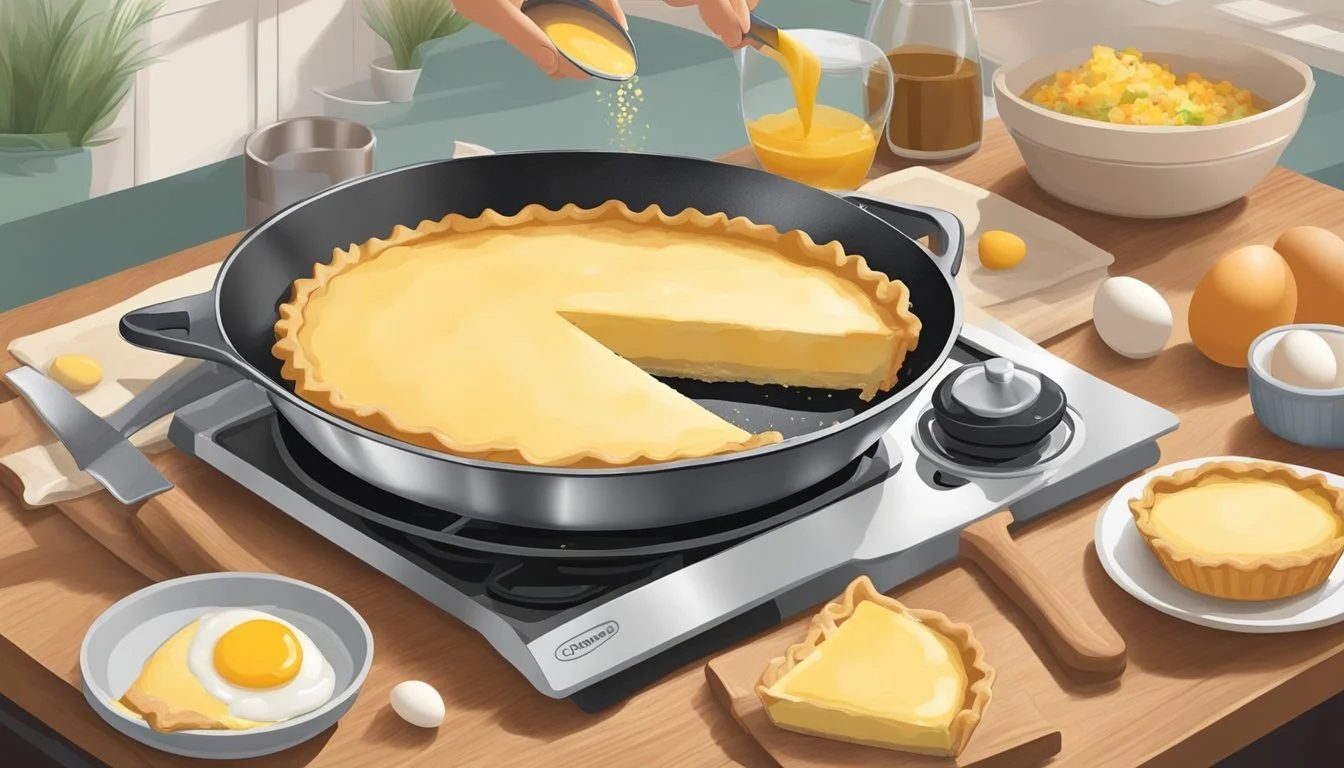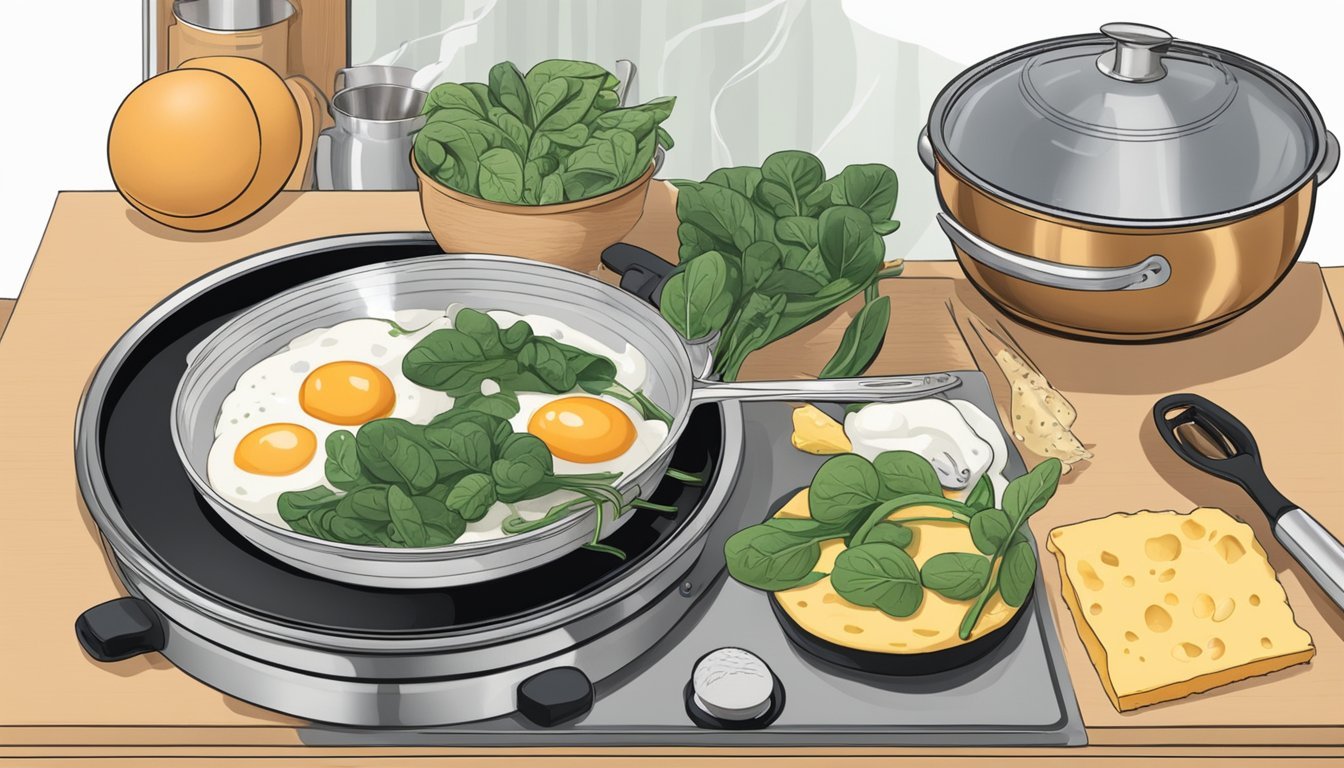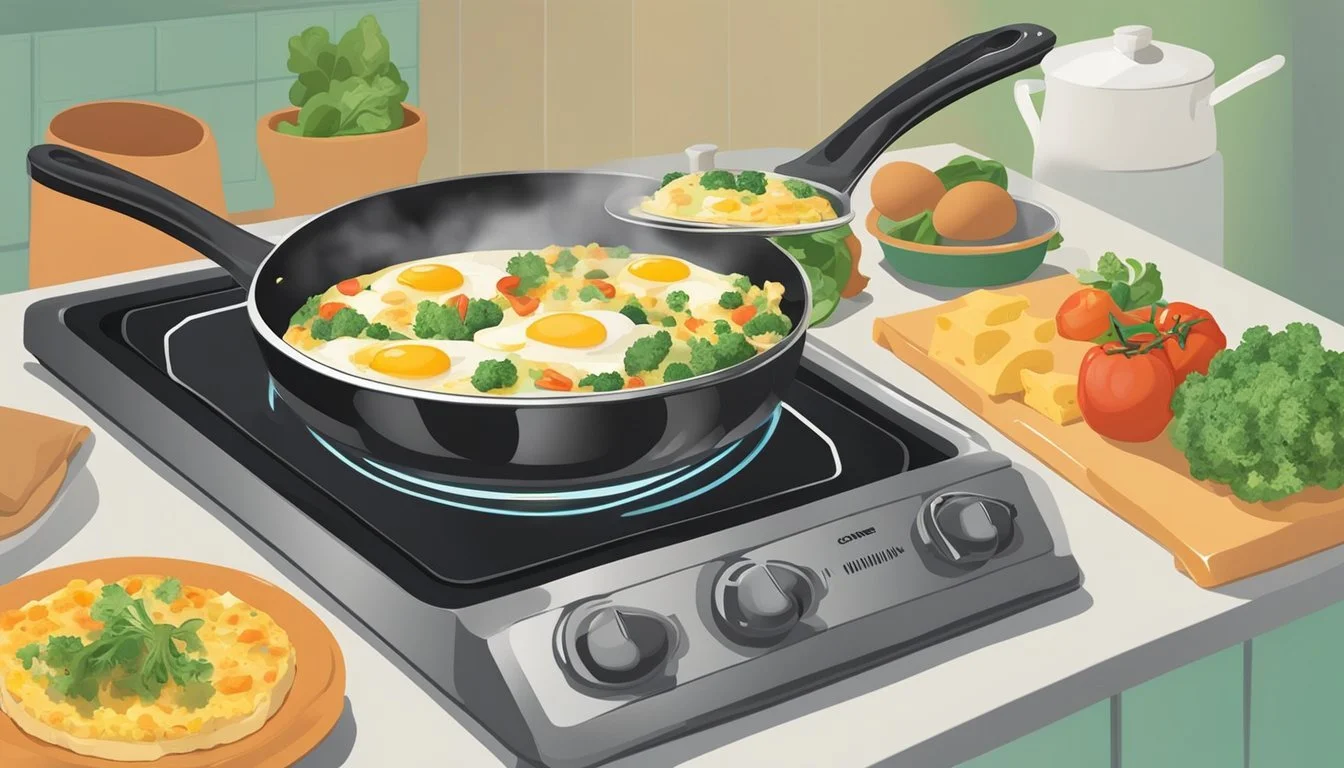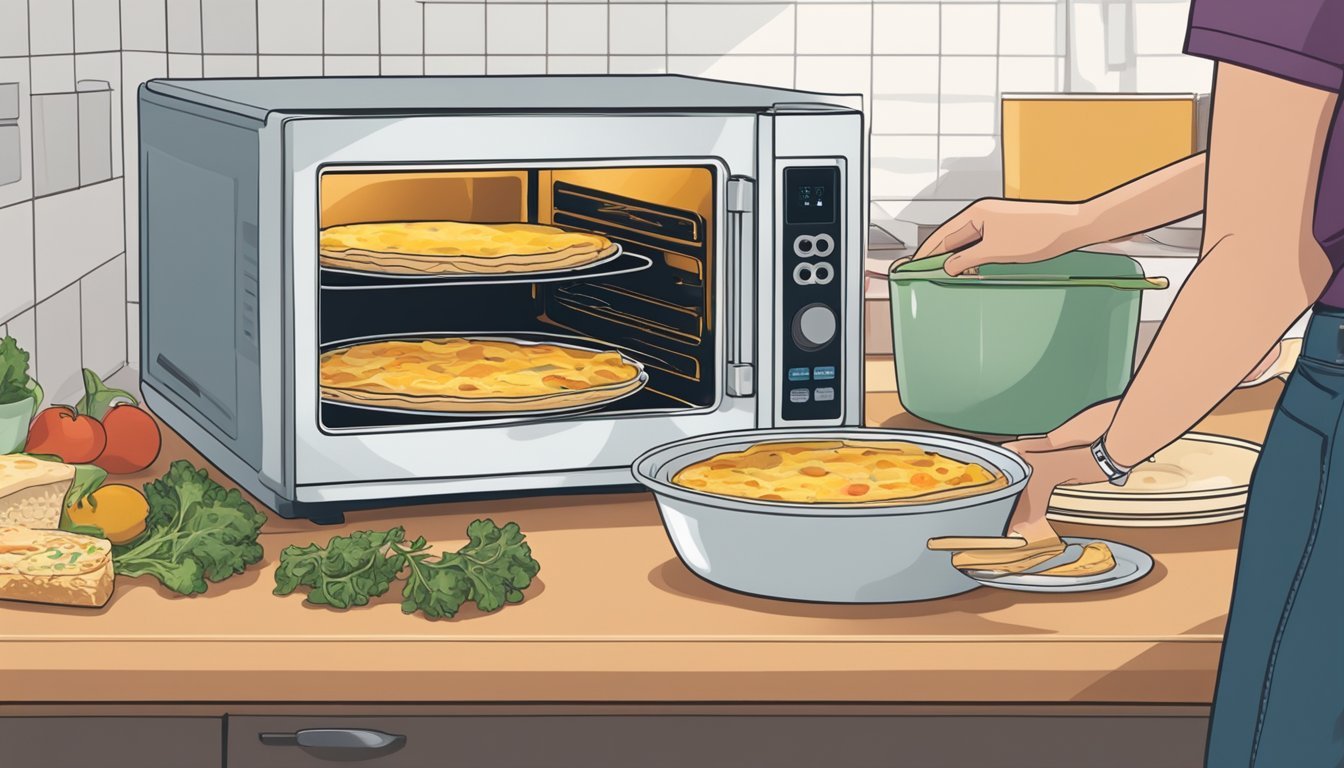How to Whip Up a Quiche Without an Oven
Stovetop Techniques Unveiled
A quiche (What wine goes well with quiche?) is a versatile and beloved dish that can fit almost any meal – from a simple breakfast to a sophisticated dinner party. Its creamy custard texture filled with a variety of cheeses, vegetables, and meats, encased in a buttery crust, makes for a delicious dish. However, the traditional preparation usually calls for baking in an oven, which might not always be an option.
For those moments when an oven is out of reach but the craving for a homemade quiche remains, there are alternative methods to satisfy the taste buds. With a bit of creativity and the right techniques, anyone can whip up a healthy and mouthwatering stovetop quiche that rivals the oven-baked variety. Crafted in a skillet and finished under a broiler or with a lid to allow the eggs to set and the flavors to meld, this no-bake approach to the classic quiche keeps the essence of the dish intact.
Understanding the fundamentals of quiche-making, from the egg mixture ratio to the importance of properly sautéed fillings, ensures that the stovetop version is just as inviting. This method not only proves convenient but also presents a quicker solution to quiche cravings without compromising on taste. Through skillful cooking and the proper sequence of layering ingredients, the result is a satisfying quiche complete with a tender, golden layer of melted cheese atop a medley of chosen fillings.
Ingredients Selection
Creating a crustless quiche without an oven focuses heavily on the quality and combination of ingredients used. This section will guide readers through selecting the right components emphasizing eggs, dairy, cheeses, vegetables, and proteins.
Choosing the Right Eggs and Dairy
Eggs are the cornerstone of any quiche. For richness in flavor and texture, whole eggs are essential. Dairy adds creaminess, so milk and cream should be chosen based on desired consistency; heavy cream for a denser quiche, while milk will result in a lighter dish. A splash of olive oil can provide a touch of healthy fat if cream is less preferred.
Selecting Cheeses for Flavor and Texture
Cheese contributes to both the taste and structure of a quiche. Consider feta for tanginess, cottage cheese for creaminess, and goat, Swiss, or Gruyère for a complex flavor profile. Parmesan cheese can add a salty, nutty taste, while mozzarella or smoked mozzarella offers gooeyness. Choose based on the flavor profile desired; combine soft and hard cheeses for-depth.
Vegetable Varieties and Preparation
Vegetables add texture and freshness to the dish. Spinach (What wine goes well with spinach?), mushrooms, and artichokes (What wine goes well with artichokes?) pair well with eggs. To ensure they release minimal water during cooking, sauté them lightly. Red peppers and leeks should be caramelized to heighten their sweetness. Prep your vegetables with a light coat of olive oil and a dash of black pepper or nutmeg to enhance their natural flavors.
Meats and Alternative Proteins
For those including meats, bacon, ham, pancetta, or sausage add savoriness and depth. Cook the meats beforehand to render out the fat and ensure they're crisp. Alternative proteins like tofu can be used for a vegetarian option, and it's essential to press it well to remove excess moisture, maintaining the quiche's texture.
Substitute Techniques for Oven
When an oven is not at hand, one can still create a delicious quiche using a variety of alternate cooking methods. These stove-top and non-oven techniques involve using common kitchen equipment to replicate the even, all-around cooking effect of an oven.
Skillet Method
Using a skillet over a stove is a straightforward alternative to oven-baking a quiche. One should opt for a non-stick skillet with a tight-fitting lid to create an oven-like environment. Firstly, heat the skillet over medium heat, then pour the quiche mixture into the pan. Secondly, cover it with the lid and allow it to cook through, making sure the heat is distributed evenly and the quiche sets properly without burning.
Steaming Technique
One may also employ steaming to cook a quiche without an oven. This method requires a large pot with a steamer insert and a suitable dish, such as a heatproof casserole dish, which fits inside the pot without touching the water. After the water has reached a steady boil, the quiche should be carefully placed within the steamer, covered, and cooked until set. It is crucial to ensure the water does not evaporate completely during cooking.
Slow Cooker Method
A slow cooker can double as an improvised oven for making quiche. The process involves:
Greasing the slow cooker insert.
Pouring the quiche mixture into the insert.
Setting the slow cooker on high and cooking for 2 to 3 hours.
It is important to check for doneness, as cooking times may vary based on the size and model of the slow cooker.
Stovetop Pie Dish Approach
Finally, a pie dish can still be employed on the stovetop for those who prefer a more traditional quiche shape without the use of an oven. The method includes placing the pie dish over a pan of simmering water, essentially creating a double boiler system. The gentle heat from the steam cooks the quiche slowly, mimicking the effect of an oven. This requires constant attention to maintain a consistent temperature and to ensure the water does not run dry.
Assembly and Cooking
The assembly of a quiche without an oven revolves around arranging ingredients in layers and cooking them over a controlled heat source. Precision in adding seasonings ensures a flavorful custard.
Layering Ingredients
When assembling a quiche, start by layering your selected fillings evenly across the bottom of a well-greased pan. One might include vegetables, meats, or cheeses. It's crucial to season each layer with salt and pepper to taste, considering that kosher salt dissolves easier in the egg custard. Pouring the egg custard over the fillings should be done gently to maintain the layers.
Fillings: Vegetables, meats, cheeses
Seasonings: Kosher salt, black pepper
Cooking Times and Temperatures
Cooking a quiche without an oven requires a stovetop approach, using a medium to low heat setting. The pan should be covered with a lid to mimic the oven's encapsulated environment. Depending on the thickness of the quiche, it may need to cook for 20-30 minutes.
Initial Heat: Medium
Reduced Heat: Low
Cooking Duration: 20-30 minutes
Monitoring for Doneness
To check for doneness, one should look for the custard to set firmly, with no visible liquid egg. A knife inserted in the center should come out clean, indicating that the custard is cooked through. The edges should be lightly golden, and the top layer should have a slight resistance to touch.
Visual Cues: No liquid egg, lightly golden edges
Tactile Cues: Slight resistance on the top layer
Tool for Check: Clean knife after insertion
Serving and Presentation
When the quiche is ready, its presentation enhances both its flavors and the overall dining experience. Whether served for brunch (What wine goes well with brunch?), breakfast, lunch (What wine goes well with lunch?), or dinner, a well-presented dish makes the meal more enjoyable.
Plating and Garnish
For plating, one should transfer the quiche to a warm plate to maintain its temperature. A golden-brown top provides an inviting appearance. Quiche can be garnished with fresh herbs like parsley or chives for a pop of color. If it's a sweet quiche, a dusting of powdered sugar or a drizzle of fruit compote can entice the taste buds.
Side Dishes and Pairings
Quiche pairs well with both savory and sweet side dishes. For a brunch or lunch, consider a light salad with a vinaigrette or a medley of roasted Mediterranean vegetables to complement the richness of the quiche. For dinner, a side of garlic sautéed greens adds a satisfying contrast.
Savory Sides
Roasted Mediterranean vegetables
Sautéed garlic spinach
Crisp green salad
Sweet Sides
Fresh fruit salad
Berry compote
Honey glazed carrots
Serving Sizes and Portions
The size and portion of quiche should cater to the meal and the number of diners. For breakfast, a smaller slice ensures room for other protein-rich sides. A larger portion is fitting for lunch or dinner when the quiche serves as the main dish. An average quiche can be sliced into six to eight pieces, depending on the total number of accompaniments.
Breakfast: 1/8 of the quiche
Lunch/Dinner: 1/6 of the quiche
It's best to slice the quiche after it has cooled slightly for clean cuts.
Adaptations for Dietary Restrictions
When customizing a quiche to meet dietary restrictions, the focus should be on adjusting the crust, dairy, and fillings. It's essential to replace certain ingredients without compromising the flavor or texture of the quiche.
Making a Gluten-Free Quiche
To create a gluten-free quiche, the crust needs to be made without wheat flour. Options include:
Almond flour for a hearty, nutty base.
Coconut flour, which is light but requires more moisture.
Combine these with butter or a non-dairy alternative and a pinch of salt. For the binding agent, one could use xanthan gum or a gluten-free baking mix.
Vegetarian and Vegan Options
For a vegetarian quiche, simply avoid meat and opt for vegetables, cheese, and eggs. Dairy alternatives like almond milk or soy milk can replace whole milk or heavy cream for a lighter version.
Vegan quiches require more substitutions, such as:
Chickpea flour or silken tofu for eggs.
Nutritional yeast or vegan cheese for the dairy component.
Focus on flavorful vegetables like spinach, mushrooms, and tomatoes to enrich the quiche.
Low-Carb and Keto-Friendly Recipes
A low-carb, keto-friendly quiche does away with the traditional crust. Instead, use a base of:
Eggs: The main source of protein.
Heavy cream or dairy alternatives: To achieve a creamy consistency.
Increase the ratio of eggs and dairy to create a satisfying, crustless quiche. Fill with low-carb vegetables such as spinach and mushrooms, and add cheese for a rich, satisfying flavor.
Variations and Creative Twists
Exploring variations and creative twists in non-oven quiche preparation allows cooks to reinvent this classic dish. By manipulating elements such as the absence of a crust and incorporating diverse mix-ins, the quiche can take on regional flavors or fit into any brunch setting.
Crustless Options
Crustless quiches redefine the traditional dish by omitting the pie crust, offering a lighter version that focuses on the filling. For instance, crustless spinach quiche embraces spinach as a staple ingredient, offering a substantial texture and a rich source of nutrients. A crustless quiche Lorraine eliminates the crust but maintains the classic flavors of Lorraine with bacon, cheese, and a custard base made from eggs and cream. One could also try a frittata, which naturally lacks a crust and is cooked slowly on a stovetop and then finished under a broiler or in a toaster oven.
Regional and International Flavors
The quiche can be personalized to reflect various regional and international palates. Adding asparagus and peas brings a fresh, spring-like quality, often found in European variations. A combination of Dijon mustard and parsley can impart a French flair to the dish. For a Mediterranean twist, one might add red onion, feta, olives, and tomatoes. Experimenting with spices specific to particular cuisines, such as cumin for a Middle Eastern touch or chili for a Mexican influence, can significantly distinguish the flavor profile.
Customizing with Mix-Ins
The opportunity to customize a quiche with an array of mix-ins is endless:
Vegetables: Sautéed broccoli, asparagus, or red onion can serve as nutritious and flavorful additions.
Herbs & Spices: Incorporate herbs like parsley, or add a teaspoon of Dijon mustard for a depth of flavor.
Protein: Consider including various meats or tofu for a protein boost, adapting the classic quiche Lorraine with bacon or ham.
Below is a simple mix-in combination table for anyone seeking recipe inspiration for a non-traditional brunch recipe:
Base Ingredient Suggested Mix-Ins Eggs & Cream Broccoli, Cheddar, Bacon Eggs & Milk Spinach, Feta, Red Onion Vegan Egg Substitute Tofu, Dijon Mustard, Asparagus
Customizing mix-ins caters to personal taste preferences and dietary requirements, transforming the versatile quiche into a personalized dish.
Storage and Reheating Tips
Proper storage and reheating are crucial to enjoying leftover quiche that maintains its original flavor and texture. These techniques ensure that the delicate balance of ingredients like half and half, caramelized onions, and garlic powder, are preserved.
Optimal Storage Techniques
For preserving quiche, one must store it in the refrigerator within two hours of cooking. The quiche should be tightly covered with plastic wrap or aluminum foil, or better yet, placed in an airtight container. This will protect the quiche from absorbing other flavors in the refrigerator and maintain its freshness. A quiche with ingredients like caramelized onions or garlic powder should be consumed within 3 to 4 days for optimal taste.
Reheating Without Compromising Quality
To reheat quiche without an oven:
Microwave: Place a slice on a microwave-safe plate. Heat on 50% power for one minute increments until desired temperature is reached. This method helps maintain the creamy texture of the egg and dairy elements.
Stovetop: Warm a non-stick skillet over medium heat. Add the quiche and cover with a lid, reheating gently for a few minutes. The steam within the skillet will help reheat the quiche evenly without making it too dry.
Toaster Oven: For those with a toaster oven, heat it to 350 degrees Fahrenheit and warm the quiche for about 10 to 15 minutes.
Always ensure the quiche reaches at least 165 degrees Fahrenheit internally to ensure food safety.
Freezing for Long-Term Storage
If one won't consume the quiche within a few days, freezing is an option. To freeze quiche:
Allow the quiche to cool completely at room temperature.
Wrap the quiche tightly in plastic wrap, then a layer of foil, or place it in a freezer-safe bag or container.
Label with the freezing date. Properly stored, a quiche can last in the freezer for up to three months.
To reheat from frozen, one should thaw the quiche in the refrigerator overnight and then follow the reheating instructions as listed above. It’s important to note that quiches containing large amounts of dairy, like half and half, or watery vegetables, like frozen spinach, may experience a change in texture when thawed and reheated.








